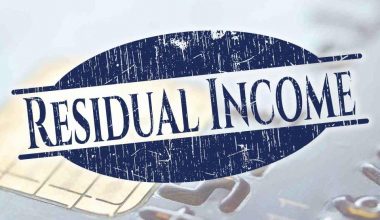Long-term business success requires constant anticipation of future challenges. The projected income, or profit and loss statement, provides a picture of your financial future and lets you decide if you will have to change anything. However, you must prepare your projected income statement. The income statement shows the corporation’s profitability. For example, your projected income statement gives information about how your company makes and sells things over a certain amount of time, usually a month, quarter, or year. If you’re wondering how to make a projected income statement, this article will walk you through the process.
What Is a Projected Income Statement?
A projected income statement takes into consideration current trends and expectations to produce a financial picture that management believes it can accomplish as of a future date. The predicted financial statements will at the very least include the income statement and balance sheet. This data is frequently produced using a revenue trend line and expense percentages based on present ratios of expenses to revenues.
For example, a projected income statement shows how much money you expect to make and how much you expect to spend over the next year or so. If the sums don’t seem right, you can start making adjustments to make things right.
Why Is Projected Income Statement Important?
It’s important because it lets you and potential lenders and investors know if the business is doing well and/or when a profit is expected.
Standard Operating Procedures for Projected Income Statements
A more useful set of expected financial statements will have the following components:
- An income statement.
- Estimates of expenses that account for step costs at significant points where revenues increase or decrease.
- Considering the pace of growth that the business might anticipate based on its prior results,
- Corporate inefficiencies and the possibility for expansion
- The company’s ability to raise the funds necessary to produce the anticipated financial results
The Importance of Projected Income Statements
An income statement helps business owners determine if increasing revenue, reducing costs, or doing both will enable them to turn a profit. It also shows how well the company’s plans from the beginning of a certain fiscal year worked out. Business owners can use this document to evaluate the effectiveness of their strategies. Based on their investigation, they can also choose the best ways to raise income. The few additional elements that an income statement reveals are listed below:
- Regular reports: The income statement is prepared on a weekly or monthly basis, whereas other financial statements are released once a year. As a result, business owners and investors may carefully monitor the company’s performance and make informed decisions. As a result, they can spot and fix issues that affect small businesses before they spread and become expensive.
- Expense identification: This statement highlights any costs that are on the horizon, any unexpected expenditures made by the company, and any expenditures that are over or under budget. Expenses include personnel salaries, building rent, and other administrative costs. When a small firm starts to grow, it will see that its expenses are increasing. These expenses could include hiring personnel, buying materials, and promoting the business.
- Identifying expenses: Investors can better understand the project they want to fund by reading this overview of the company. Likewise, banks and other financial institutions can look at this document to see if the business is creditworthy.
Who Uses an Income Statement?
There are two types of users of this financial statement: internal and external users. Examples of internal users who use this data to evaluate the status of the business and take actions that will boost earnings include the board of directors and company management. They might also take care of any cash flow concerns you may have.
Examples of external users include creditors, investors, and competing enterprises. Investors assess a company’s potential for future growth and profitability before deciding whether to invest in it. Creditors look at the income statement to see whether the company has enough cash flow to pay its debts or apply for more credit.
What is a Projection Statement?
A statement of projected revenue is one that pertains to the future. It outlines the amount of revenue and expenses you anticipate over the next year or so.
Why Are Projected Income Statements Important?
The projected income statement, for example, reveals to you, the prospective lenders and investors, whether or not the business is successful and/or when a profit is anticipated.
How Do You Write a Projection Report?
Guidelines for writing a report on project management
- Short and uncomplicated is best.
- Avoid using technical jargon and be brief.
- Create a graphic.
- Be truthful about your advancement.
- Highlight any calls to action.
Projected Income Statement Example
Let’s look at an example of a projected income statement. Imagine you are a small business owner who is thinking about growing into the widget industry. You have made the decision to create a projected income statement for the following year to determine whether the new product is profitable. You will need to consider;
- Revenues: Your income, usually referred to as sales to customers, is the first thing you need to estimate. Your estimated income is $50,000 since you think you can sell 1,000 widgets at an average price of $50 each.
- The expense for Goods Sold: The next step is to calculate your cost of goods sold. This represents the price of purchasing or making the widgets. In this instance, you’ve already identified a vendor that will sell them to you for $1,500 for 100 widgets, or $15 apiece. Therefore, for the 1,000 widgets, you anticipate selling, your projected cost of goods sold will be $1,000 * $15, or $15,000.
- Gross Income: Simply put, gross profit equals sales minus the cost of products sold. Therefore, in this instance, $50,000 minus $15,000 equals $35,000.
- Operational Costs: You must estimate the increasing operating costs you’ll have as a result of selling this product. Also, your salesperson will get a ten percent commission on widget sales, or $5 per widget.
- Net Profit: We can finally calculate our net income. Hence, we’ll make the assumption that we don’t require a loan to launch this new business and disregard the effect of taxes to keep our example simple for the accountants reading this.
How to Prepare a Projected Income Statement
To prepare a projected income statement, a small firm must consider its income, expenditures, and net profit or loss for a given accounting period. Along with the balance sheet and cash flow statement, the income statement (sometimes known as a profit and loss statement) is also one of the three main financial statements that corporations publish.
Moreover, you can use these accounting procedures below to prepare a projected income statement and report the earnings your small business makes.
#1. Decide on a Reporting Period.
The first step in producing an income statement is choosing the reporting period for your report. Generally, companies can select one of three reporting schedules for their income statements: annually, quarterly, or monthly. Publicly listed organizations must prepare quarterly and annual financial statements, whereas small businesses have fewer strict reporting requirements. By generating monthly income statements, you will see trends in your income and spending. So, you can use such data to inform your business decisions and raise the output and profit of your company.
#2. Produce a Trial Balance Report.
The normal trial balance report must be printed out before you can create your company’s income statement. However, you can easily create the trial balance using your cloud-based accounting software. Trial balance reports, which are internal documents, show the final balance of each account in the general ledger for a specific reporting period. It is necessary for the process of creating an income statement since a corporation obtains information about its account balances through the development of balance sheets. You will also receive all the end-of-period information needed to create an income statement.
#3. Calculate Your Salary
The next step is to calculate the total sales revenue for the reporting period for your organization. Your income includes all of the money, even if you haven’t yet received payment in full for the services you provided during the reporting period. After summing up all of the revenue line items from your trial balance report, enter the total in the revenue line item of your income statement.
#4. Determine the Cost of the Goods Sold
Generally, your cost of goods sold will include the direct labor, materials, and overhead expenses you incur to produce your products or services. Just below the line item for revenue on the income statement should be the total cost of items sold. Also, you add up all the line items for the cost of goods sold in your trial balance report.
#5. Calculate the Gross Profit.
The total cost of products sold should be deducted from the revenue total on your income statement. This calculation will yield your gross margin, which is your overall revenue from the sale of your goods and services.
#6. Include Overhead Costs
Add up all of the operating expenses listed on your trial balance report. Verify that you have the correct numbers by checking each cost line twice. Enter the total amount as a line item for selling and administrative costs on the income statement. It is immediately below the gross margin line.
#7. Calculate Your Salary
The selling and administrative expenses are added together to determine the gross margin. As a result, you will get the pre-tax income sum. So, you can enter the amount at the bottom of the income statement.
#8. Don’t Forget to Include Taxes
To calculate your income tax, divide your pre-tax income amount by the relevant state tax rate. Then, include it in the income statement under the pretax income amount.
#9. Calculate Your Net Income.
Your business’s net income is calculated by deducting income taxes from the total pre-tax revenue. You should enter the sum as the last line item on your income statement. This will, however, give you a broad picture of how your business is doing and let you determine its profitability.
#10. Complete the Income Statement.
Finally, to complete your income statement, add a heading to the report indicating that it is an income statement. Also, include details about your business and the reporting period to which the income statement applies. Using the data you acquired, you have now created an accurate income statement. Both you and your company will benefit greatly from this newfound understanding of what an income statement is.
How Do I Create a Projected Income Statement in Excel?
- Make a fresh financial prediction in Excel.
- Your past sales data is on an Excel sheet, so open it.
- Data in the two columns containing the date and net revenue should be selected.
- Select “Forecast Sheet” from the Data tab by clicking.
- Click “Create” after entering the expiration date of your forecast.
- Give your financial forecast a title and save it.
How is the projected income statement presented?
It is frequently displayed as an income statement. It’s critical to include sales, cost of goods sold, gross profit, and operating expenses when preparing a projected income statement. You can also calculate your predicted earnings using the formula gross profit-operating costs = net income.
How Do You Project Income for a New Business?
- The procedures for creating financial estimates for your new company
- Plan your purchases and sales.
- Financial projections should be made.
- Establish your financial requirements.
- Plan ahead using the forecasts.
- Create a plan for emergencies.
- Monitor.
Projected Income Statement FAQs
How Do You Explain Financial Projections?
A financial projection displays a company’s anticipated revenues, costs, and cash flows over a given time frame.
What is the difference between projected and actual income?
Projected income includes all linked gifts and registration fees, even if they are not linked to gifts. Except for pledges, recurring gifts, and MG Pledges, actual income includes all gift types that are linked to an event record.
What are the 3 main parts of an income statement?
Profit, expenses, and revenues are the 3 main parts of the income statement.
Related Articles
- Income Statement Explained!!! What is an Income Statement? Formulas & Elements
- Business Valuation: All you need to know [Detailed Guide]
- Capital Budgeting Decision Techniques and Analysis
- Market Risk Premium: Current Market risk Premium in the US Explained!
- INCOME STATEMENT: Formats, Examples, and How To Prepare One






